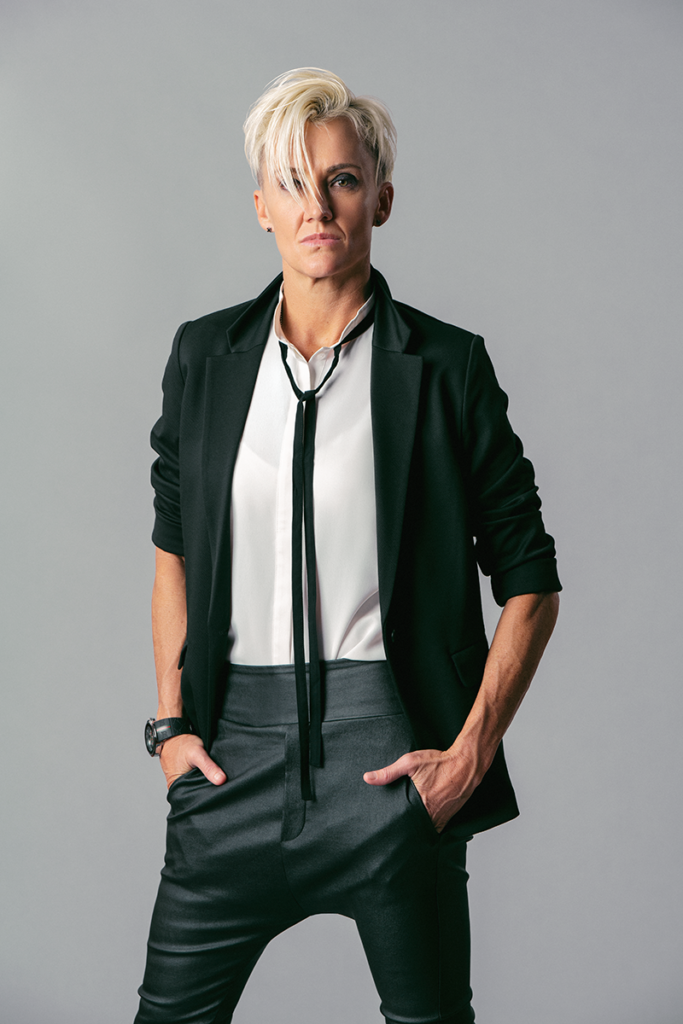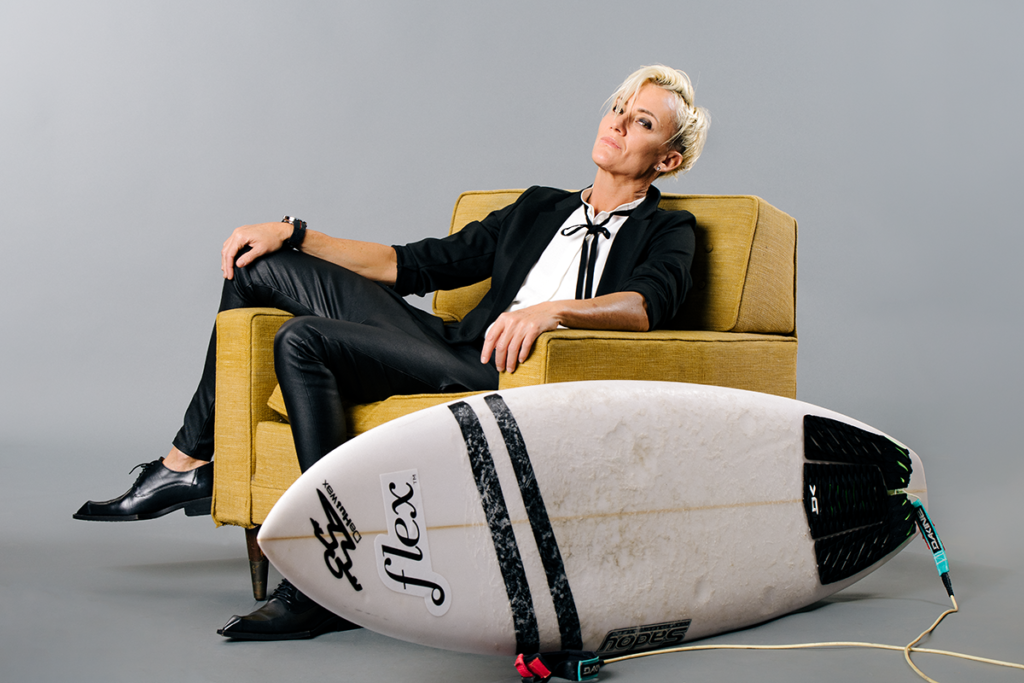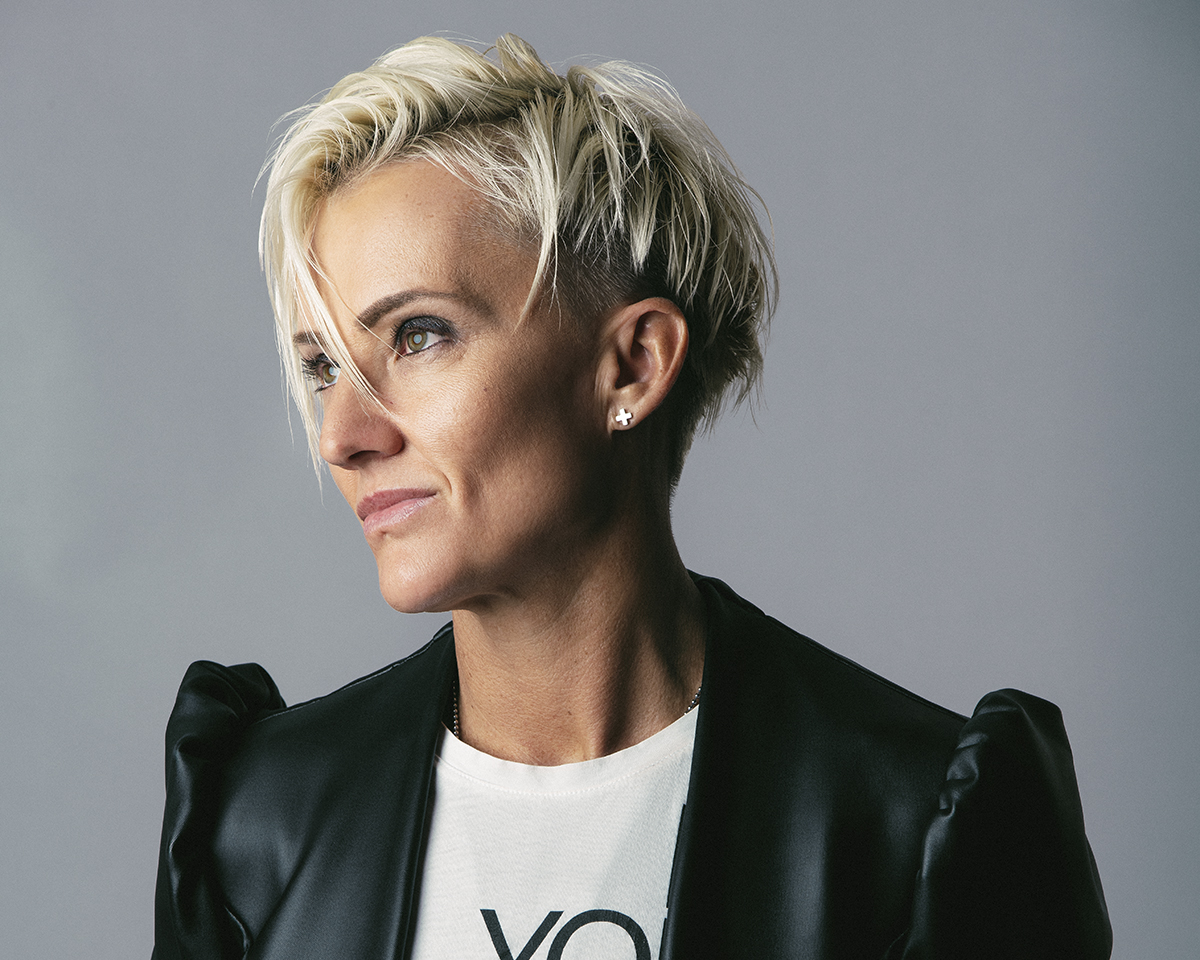The pioneer for women’s big wave surfing has made a career out of defying norms and challenging expectations.
Text by Kylie Yamauchi
Images by Chris Rohrer
All eyes were on Keala Kennelly from a young age. Not yet a pioneer of women’s big-wave surfing, a world champion, or an activist for LGBTQIA and women’s rights, she was merely a blonde and tomboyish 6-year-old eager to paddle out and score waves. Beside her on the Kauaʻi shore were her childhood friends Andy and Bruce Irons, Kamalei Alexander, and Reef McIntosh. She didn’t feel out of place. Keala looked, acted, and surfed like them—to her, she was one of the boys.
But, as Keala remembers, some watchful adults saw her differences and shook their heads in disagreement. As a collective body, the groms hit the water and start paddling to the lineup, with Keala in the lead.
Keala Kennelly rode her first wave with her father when she was a toddler. As a kid, she and her friends, many of whom were boys, explored, played football, rode bikes, and surfed every chance they could get.
But in 1984, when she was around 6 years old, she recalls adults beginning to dissuade her from participating in what they deemed “boy activities.”
She became depressed at a young age, acutely aware of the privileges and freedoms afforded to men and the lack thereof for women.

In her adolescent years, an androgynous Keala was ostracized by both boys and girls. She struggled to understand her lesbian sexuality without any queer mentors for guidance. But she had a strong sense of identity. “Haters are my motivators,” she says. She turned to the only outlet she had: surfing. Her drive and innate talent on the waves naturally led to a competitive career.
In 1995, after a frustrating and lonely paddle out, Keala arrived at the crowded lineup. She was 17 years old, and it was her first year on the championship tour of the Association of Surfing Professionals. She looked around and was relieved to be surrounded by female faces.
Yet these women weren’t like Keala with her muscled shoulders, cropped and spiky hair, defined jawline, and piercing gaze. They were stick thin and clad in skimpy bikinis—illustrative of the sexist pressures placed on female athletes by the industry.
When Keala entered the tour, queerness was considered a taboo that invalidated one’s talent. “My sexual orientation was immediately put into question,” Keala says. “I felt like I was living under a microscope of people trying to witch-hunt me.”
To protect her career, Keala hastily revealed she was dating a man at the time. Regardless, a seven-page profile by Surfer Magazine, suggestively titled “The Naked Truth,” insinuated she was in a lesbian relationship. Without her consent, her sexuality was again publicized.
“My sexual orientation was immediately put into question. I felt like I was living under a microscope of people trying to witch-hunt me.”
Despite Keala’s impressive rankings throughout the years, the ASP’s homophobic and sexist atmosphere left her disillusioned with the sport.
The prize money for women’s contests was well below that of men’s contests. (In the 2006 Quiksilver-Roxy Pro Gold Coast, the first-place men’s winner received a $30,000 check, while the first-place women’s winner received $10,000.)
Women’s contests were carelessly held in poor surf conditions while the men’s were held in prime conditions. To female competitors, it was made clear that they were merely a sideshow.
In 2006, drained by years of pretending, Keala decided to stop hiding her sexuality. She began bringing her girlfriend to contests and introducing her as such.
All the cautionary tales Keala had heard quickly became true: After coming out, she soon received the news that three of her sponsors—Red Bull, Spy+ Eyewear, and Vestal Watches—would no longer support her; Billabong reduced her salary by half for the next five years. This marked her exit from the tour.

But, all was not bleak. The end of Keala’s career marked the beginning of her new life. “I think not living your truth and not being authentic to who you are is such a soul-crushing existence,” Keala says. “When I came out, I felt so free to be myself—so unapologetically myself, and once you feel that you can’t ever go back.”
Keala could finally enjoy the freedom of surfing without limits. She sat in a lineup at Pe‘ahi (also known as Jaws) with a like-minded group of women surfers, all of whom had been left jaded by the inequity of the sport. Massive, rolling sets reached over 40 feet high at the Maui surf break. These were the waves that spiked her adrenaline and drew on her dark rage, the inner spirit that compelled her to perform her best. Keala began to set her sights on a new kind of prize, something more glorious than any trophy she could have won on tour.
At 38 years old, Keala found herself battling for equality in women’s surfing. In 2016, she and big-wave surfers Bianca Valenti, Paige Alms, and Andrea Moller, with the help of San Mateo County Harbor District commissioner Sabrina Brennan, formed the Committee for Equity of Women’s Surfing. They set their sights on Mavericks, an iconic big-wave surf break notorious for being exclusively male during competitions. (The 1999 flyer advertising its first year labelled it for “Men Who Ride Mountains.”) A women’s heat at Mavericks, and the promise of equal prize money for men and women, would send shockwaves through the industry.
The committee immediately faced pushback. The Mavericks organizers would not yield, forcing Keala and the other activists to lobby California state officials. Throughout it all, the women received a flurry of hateful messages, many of which blamed them for ruining the contest for the men. When the committee asked other female surfers to stand in solidarity, many declined, the backlash scaring them into silence.
“I think not living your truth and not being authentic to who you are is such a soul-crushing existence.”
Keala Kennelly
Despite the harassment, the committee succeeded. In 2016, a women’s division was added to the Mavericks contest, though unsurfable conditions led to its postponement. The following year saw a landmark event for women surfers. A sea change rippled through the industry. With the barrier-breaking success of Keala and the other activists came increased publicity for women’s conditions in the sport. In the span of two years, sentiments for change reached all the way to the top.
In 2018, Keala received a call from Sophie Goldschmidt, CEO of the World Surf League (formerly known as the ASP). She informed Keala that beginning that year, the WSL would begin awarding equal prize money for all contests—regardless of gender. The decision made surfing one of the only sports in the United States mandating pay equity.
For Keala, the win was cathartic. “When you’ve been fighting this battle your entire life and then you actually get what you’ve been fighting for, it’s almost as if you can’t believe it’s happening,” Keala says. “I was in disbelief for a long time.”

Surrounded by a sisterhood of women surfers, Keala now feels unstoppable. Some people still watch her with contempt, but years of achievements have given her unbreakable confidence. At 42 years old, Keala has witnessed a few changes in her surfing—her board has increased in size and she’s the 2018 WSL’s Women’s Big Wave champion.
But her attitude toward the sport is the same: Surfing has supported her all her life and she doesn’t intend to give it up so easily. These days, when surf conditions are huge, she chases a forming wall of water. With alarming speed, she begins her descent alone down the face of a wave she wants all to herself.

